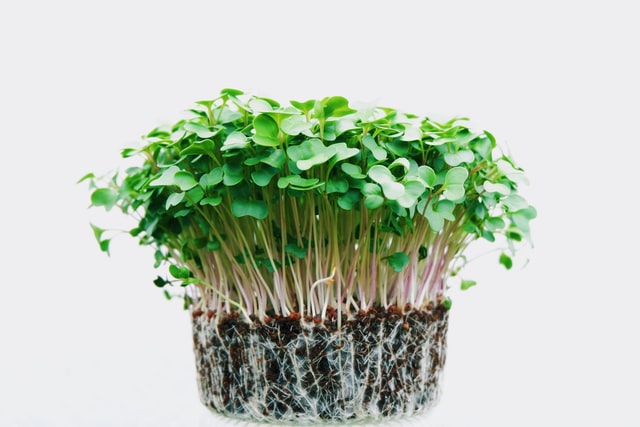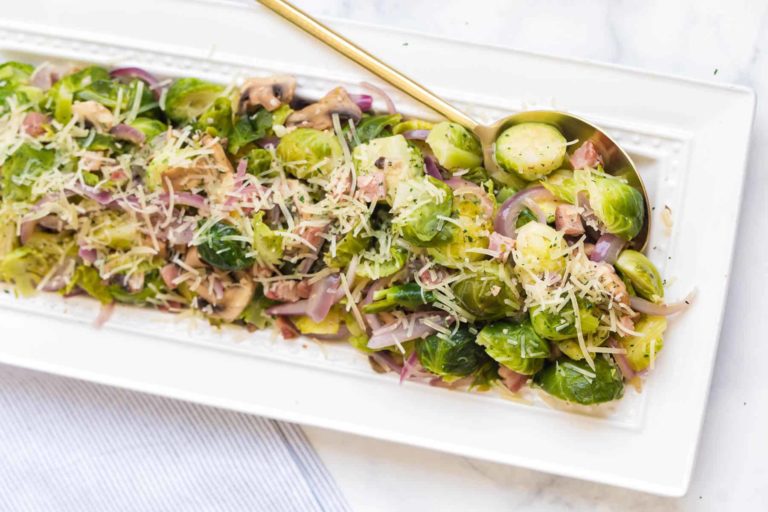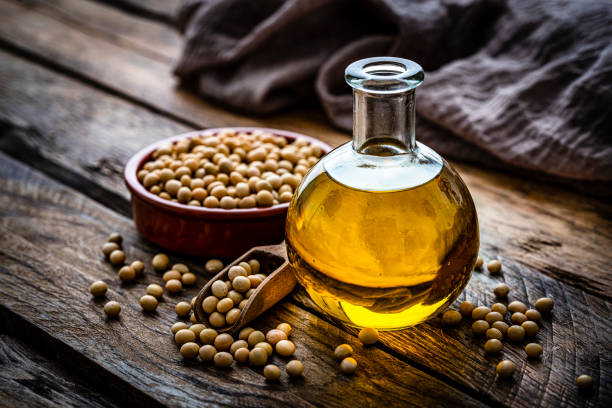10 Ways to Eat Delicious Microgreens
[et_pb_section fb_built=”1″ admin_label=”section” _builder_version=”3.22″][et_pb_row admin_label=”row” _builder_version=”3.25″ background_size=”initial” background_position=”top_left” background_repeat=”repeat”][et_pb_column type=”4_4″ _builder_version=”3.25″ custom_padding=”|||” custom_padding__hover=”|||”][et_pb_text admin_label=”Introduction” _builder_version=”4.8.1″ background_size=”initial” background_position=”top_left” background_repeat=”repeat” min_height=”581px”]
Microgreens are the trending superfood
Whatever you’re doing in your diet right now, you need to look at the various ways available to eat microgreens!
We have all heard that we need to include ‘greens’ into our diet but sometimes some of them just don’t work with our palette. And more so with kids.
But…..
Microgreens have so many more nutrients compared to those found in fully grown vegetable greens.
As with all plants, the nutrients found in various microgreens differ from species to species. Most of them also contain beneficial amounts of potassium, copper, zinc, iron, and magnesium.
What are microgreens?
Microgreens are young vegetable greens, and have a variety of flavours, colours, and textures. They are usually harvested when they are between 1 – 3 inches tall, and between 7 – 21 days after germination. You only eat the stem and the leaves.
When they are ready to be harvested, simply snip off the amount that you need with a pair of scissors and leave the remainder still growing. Some microgreens will regrow, some don’t. In general, they have quite an intense flavour that can range from tangy, to spicy, to even slightly bitter.
They are easy to grow at home under lights, in a greenhouse, or even on your window sill.
Below are 10 ways that you can eat delicious microgreens on a daily basis.
10 Ways to Eat Delicious Microgreens
Pick one, or try all, of the below ideas with your microgreens to start incorporating them into your diet.
[/et_pb_text][et_pb_text admin_label=”H2 – 1. Add them to your finished meals” _builder_version=”4.8.1″ _module_preset=”default”]
1. Add them to your finished meals
Microgreens are a fantastic addition to any meal and not for that extra pop of colour but also for a nutritional punch.
The bonus about adding them to a finished meal (but not cooking them), is that they add a crunch, their nutritional value is not minimized, and you will still be able to taste their fresh flavor.
These are great to add to pizzas, soups, wraps, baked potatoes, salads.
[/et_pb_text][et_pb_image src=”https://www.urban-gardener.co.za/wp-content/uploads/2021/04/microgreens_pizza.jpg” alt=”microgreens pizza” align=”center” _builder_version=”4.8.1″ _module_preset=”default” min_height=”421px”][/et_pb_image][et_pb_text admin_label=”H2 – 2. Cook with them” _builder_version=”4.8.1″ _module_preset=”default” custom_padding=”48px||50px|||”]
2. Cook with them
Studies have shown that microgreens have at least 50% more nutrients than their fully grown versions. Some microgreens can be cooked and some do better to remain raw.
[/et_pb_text][et_pb_image src=”https://www.urban-gardener.co.za/wp-content/uploads/2021/04/microgreen_soup.jpg” alt=”microgreen soup” align=”center” _builder_version=”4.8.1″ _module_preset=”default” custom_margin=”||51px|||”][/et_pb_image][et_pb_text admin_label=”H2 – 3. Make fresh juices” _builder_version=”4.8.1″ _module_preset=”default” custom_margin=”||51px|||” custom_padding=”21px|||0px||”]
3. Make fresh microgreen juices
Wheatgrass is one of the easiest microgreens to grow and are ready to harvest within 7 – 10 days.
You’ll need to cut the grass just above the soil and then add to a juicer. Avoid using a blender because the churning will oxidize the chlorophyll.
Wheatgrass, especially in the form of wheatgrass shots are really good for your body. It contains enzymes that helps your body to absorb nutrients and it is beleived that it may help with your digestion.
[/et_pb_text][et_pb_image src=”https://www.urban-gardener.co.za/wp-content/uploads/2021/04/microgreens_wheatgrass_juice.jpg” alt=”microgreen wheatgrass juice” align=”center” _builder_version=”4.8.1″ _module_preset=”default”][/et_pb_image][et_pb_text admin_label=”H2 – 4. Add them to your drinks” _builder_version=”4.8.1″ _module_preset=”default” custom_margin=”50px|||||” custom_padding=”||50px|||”]
4. Add them to your drinks
Microgreens come in brilliant green or purple and red hues, and are so delicate that they are perfect as a garnish to your gin or other favourite evening tipple.
[/et_pb_text][et_pb_image src=”https://www.urban-gardener.co.za/wp-content/uploads/2021/04/gin-with-microgreens.jpg” alt=”gin with microgreens” align=”center” _builder_version=”4.8.1″ _module_preset=”default”][/et_pb_image][et_pb_text admin_label=”H2 – 5. Microgreens powder” _builder_version=”4.8.1″ _module_preset=”default” min_height=”158.4px” custom_padding=”53px||55px|||”]
5: Microgreens powder
If you don’t love broccoli but know that it’s good for you, you can make your own microgreens powder. Simply dehydrate and grind down into a powder and add to your cooking, smoothies and so much more.
[/et_pb_text][et_pb_image src=”https://www.urban-gardener.co.za/wp-content/uploads/2021/04/microgreens_powder.jpg” alt=”microgreens_powder” align=”center” _builder_version=”4.8.1″ _module_preset=”default” custom_margin=”||49px|||”][/et_pb_image][et_pb_text admin_label=”H2 – 6. They make an eye-popping garnish!” _builder_version=”4.8.1″ _module_preset=”default” custom_margin=”42px|||||” custom_padding=”||49px|||”]
6. Garnish
Use your microgreens to garnish breakfast platters, savoury finger foods, pancakes and so much more. Your imagination is the only limit.
[/et_pb_text][et_pb_image src=”https://www.urban-gardener.co.za/wp-content/uploads/2021/04/microgreens_garnish.jpg” alt=”microgreens garnish” align=”center” _builder_version=”4.8.1″ _module_preset=”default”][/et_pb_image][et_pb_text admin_label=”H2 – 7. Microgreen pesto” _builder_version=”4.8.1″ _module_preset=”default” min_height=”302.1px” custom_padding=”48px||0px|||”]
7. Microgreen pesto
Microgreen pesto is super easy to make. The benefit with this is that microgreens are fast growing and you can make the pesto within a week.
The microgreen pesto can be stirred into pastas, drizzled over roasted veg, or even spread on toast and because each microgreen plant has a different flavor (for example broccoli, mizuna, beets, sunflowers), you will end up with a tasty range of microgreen pesto.
Mix and match different microgreens, like Pak choi, broccoli, or basil, with a variety of nuts for different taste sensations!
[/et_pb_text][et_pb_image src=”https://www.urban-gardener.co.za/wp-content/uploads/2021/04/microgreens_pesto.jpg” alt=”microgreens_pesto” align=”center” _builder_version=”4.8.1″ _module_preset=”default” custom_margin=”-40px|||||” custom_padding=”51px|||||”][/et_pb_image][et_pb_text admin_label=”Text with a pesto recipe” _builder_version=”4.8.1″ _module_preset=”default”]
Here’s a quick and easy recipe to make your own microgreen pesto:
Ingredients:
- 2 cups of microgreens (such as kale, arugula, Pak choi or basil)
- 1/2 cup of grated parmesan cheese
- 1/2 cup of pine nuts or walnuts
- 2 cloves of garlic
- 1/2 cup of olive oil
- Salt and pepper to taste
Instructions:
- Wash the microgreens and pat them dry.
- In a food processor, pulse together the microgreens, parmesan cheese, pine nuts or walnuts, and garlic until they are well combined.
- With the food processor running, slowly pour in the olive oil until the pesto is smooth and well-blended.
- Season the pesto with salt and pepper to taste.
- Transfer the pesto to a jar or container and store it in the refrigerator for up to a week.
Microgreen pesto is a versatile sauce that can be used as a dip, spread, or topping for pasta, sandwiches, and salads. It’s also a great way to add some extra nutrition to your meals. Enjoy!
[/et_pb_text][et_pb_text admin_label=”H2 – 8. Microgreen guacamole” _builder_version=”4.8.1″ _module_preset=”default” custom_padding=”||51px|||”]
8. Microgreen guacomole
Sunflower microgreens, for example, make a perfect additional, healthy ingredient to this delicious guacamole that you can use.
[/et_pb_text][et_pb_image src=”https://www.urban-gardener.co.za/wp-content/uploads/2021/04/microgreens_guacamole.jpg” alt=”microgreens guacamole” align=”center” _builder_version=”4.8.1″ _module_preset=”default”][/et_pb_image][et_pb_text admin_label=”H2 – 9. Omelettes” _builder_version=”4.8.1″ _module_preset=”default” min_height=”114.4px” custom_margin=”14px|||||” custom_padding=”30px||37px|||”]
9. Omelettes
Use microgreens either within your egg mixture when cooking your omelette, or stuff your omelette with them together with the rest of your fillings. Lastly, sprinkle them on top of your finished omelette as a beautiful garnish.
[/et_pb_text][et_pb_image src=”https://www.urban-gardener.co.za/wp-content/uploads/2021/04/microgreen_omelette.jpg” alt=”microgreen omelette” align=”center” _builder_version=”4.8.1″ _module_preset=”default”][/et_pb_image][et_pb_text admin_label=”H2 – 10. Pets and birds” _builder_version=”4.8.1″ _module_preset=”default” custom_padding=”32px||55px|||”]
10. Pets and birds
Okay, this one isn’t for us but it’s for our feathered, furry and scaly friends.
You can safely feed your tasty microgreens to your rabbits and guinea pigs. Your budgies and parrots will love them and even some of the reptiles (eg. Bearded dragons) enjoy them as a snack too.
They are easy and fast to grow, and they are cheap so an inexpensive healthy food source for your pets.
[/et_pb_text][et_pb_image src=”https://www.urban-gardener.co.za/wp-content/uploads/2021/04/bearded_dragon.jpg” alt=”bearded dragon eats microgreens” align=”center” _builder_version=”4.8.1″ _module_preset=”default”][/et_pb_image][et_pb_text admin_label=”H2 – Conclusion” _builder_version=”4.8.1″ _module_preset=”default” custom_padding=”55px|||||”]
Wrapping up the food
If you’re not sure what to do with them, take one of these suggestions and find different ways to eat delicious microgreens.
Pick one, and get some microgreens into your diet. They are super good for you and jam-packed full of nutrients, so even if it means you have to hide them from yourself by cooking them into your meals, you’ve got to do it!
[/et_pb_text][/et_pb_column][/et_pb_row][/et_pb_section]


